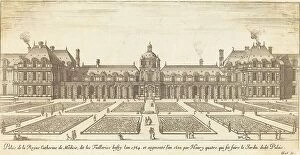De Medicis Catherine Collection
Catherine de Medici, the powerful and controversial queen of France, was a key figure in European history during the 16th century
For sale as Licensed Images
Choose your image, Select your licence and Download the media
Catherine de Medici, the powerful and controversial queen of France, was a key figure in European history during the 16th century. As the wife of King Henry II and mother to three kings, she wielded significant influence over the French court and politics. Known for her political savvy and cunning tactics, Catherine navigated through turbulent times including religious wars between Catholics and Protestants. Despite being viewed as ruthless by some historians due to her involvement in events such as the St. Bartholomew's Day Massacre, Catherine also had a softer side as a patron of the arts and supporter of education. She played a crucial role in shaping Renaissance culture in France by promoting artists, writers, and thinkers. Catherine de Medici's legacy is complex - she is remembered both for her achievements in diplomacy and statecraft, as well as for her darker actions that have sparked debate among scholars. Ultimately, she remains an enigmatic figure whose impact on European history cannot be denied.










